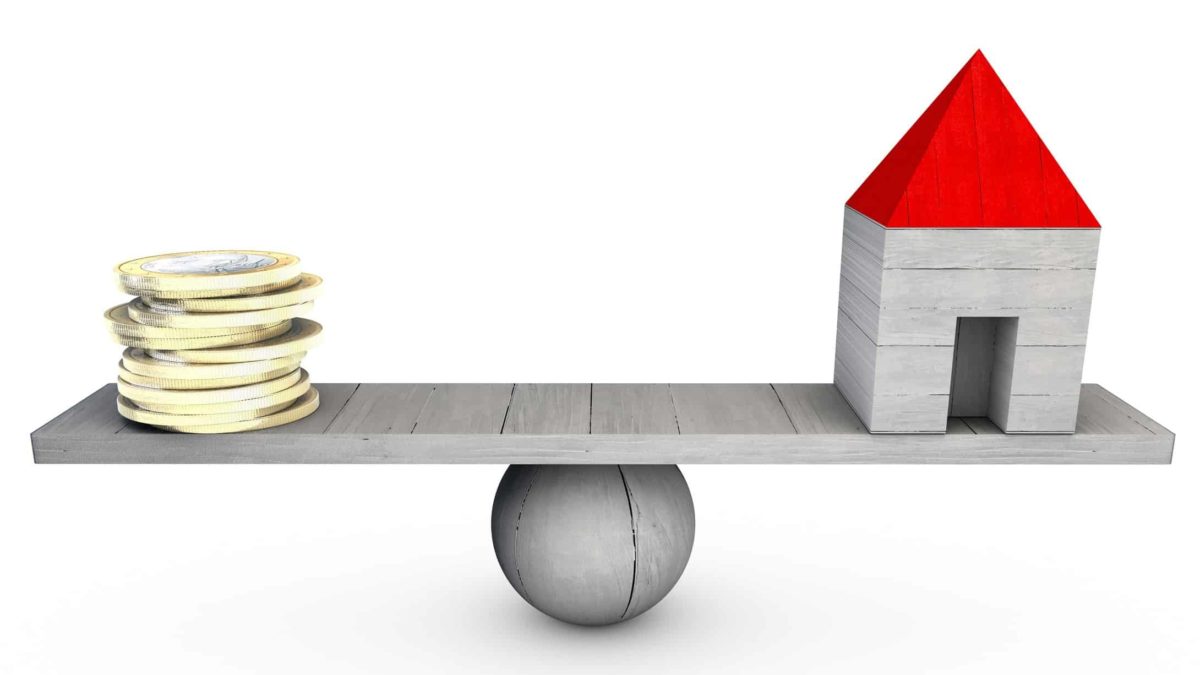Asking a shares guy the age-old shares-versus-property question?
Isn't that like asking a vegan about whether they'd like the steak or the veges?
I know… you don't have to ask if they're vegan, they'll tell you! (It's a joke, Joyce! Relax!)
And yet, I was asked for a 12-month property forecast the other day.
Of course, you know my view on forecasts (they're useless, because you can only assess their accuracy after the event!), and so that's how I answered.
I told my inquirer that I had no idea.
Over the longer term, though? I have some thoughts.
Not a forecast or a prediction. But rather, the sorts of pressures that come to play on both shares and property over years and decades. And the probabilities that result.
Let's go with shares first.
Over the last 120 years or so, both Australian and US shares have returned somewhere around 9% per annum, before taxes, fees and inflation.
Now there's nothing magic about that number. There's no mathematical reason it must be 9%. It just has been. And over shorter time periods, it's been about the same (the shorter, the more volatile, of course).
There are reasons why it might be likely to continue – primarily that investors want to earn a return that's a decent amount higher than government bonds, in exchange for taking extra risk. And if they're all rational (unlikely in the short term, far more likely in the long run), something around 9% makes sense (about 4-5% more than bonds).
But that doesn't mean it's a guarantee. And with Western GDP growing at 2-3%, on average, it can't happen forever (if a subset of a group grows at 9%, but the whole group grows at 3%, that subgroup eventually becomes larger than the whole… clearly not possible!).
But it is the historical norm for the subset of business that happens to be listed on the US markets and the ASX, so it's a decent starting point.
Is it a prediction? A forecast? Nah, just a reference point as we turn to property.
And here's where the idea of a 'subset' becomes a central point of focus.
See, when we compare shares and property, we're looking at around 1,600 ASX businesses (out of maybe 2.6m Aussie businesses in total, as of June 2023, according to the ABS.
The best 1,600 companies? No. There are probably many higher quality small and large private businesses out there. But some of the best companies in the country? Very likely, yes. And as a group, likely meaningfully higher quality than the average unlisted business.
And property? Well, the ABS tells us there were 10.9 million dwellings in the country, as at June 2022. There is, for now at least, no subset that is analogous to the ASX.
So let's look at those 10.9m dwellings.
What would it take for them to increase in value?
Well, a buyer would have to pay more for them, compared to last time they were sold, obviously.
And how would that happen? There are four main possibilities:
1. The buyer could earn more, giving them a greater repayment capacity.
2. The buyer could spend more of his or her (and usually a combined) income on repayments.
3. Interest rates could be permanently lower, allowing the borrower to spend more for the same level of repayments.
4. Rents could grow at a higher rate, giving investors a greater repayment capacity.
Let's take each in turn.
I think it's likely that wages rise, over time. But by how much? Well, once inflation settles, maybe 2-3% per annum is probably most likely. So, the borrower could, assuming all else is equal, increase his or her repayments by 2-3% per year. (Taxes would make that number a little lower if they went into higher tax brackets, and the rate of inflation in other expenses could increase or decrease that number slightly… but neither is material for our purposes here.)
The buyer(s) could give up spending in other categories to put more money towards repayments, of course. But food is pretty essential. So is transport, energy, clothing and a few other things. Also note that the average Australian borrower is apparently spending somewhere between 41% and 48% of their income on repayments, depending on which source you use. I'm not sure there's much wiggle room there… and if there is, it'll be a one-off – it can't keep increasing every year.
Of course, interest rates could be permanently lower, and that would mean that, for a given level of repayment, you could borrow more money, pushing prices up. But will rates be permanently lower? I don't think so. They'll be lower than the current level at some point in the future. And probably higher at other points. Again, though, that's cyclical, not structural. Unless the 30 years worth of repayments are done at lower average interest rates than in the past, there's no upside here.
Now, if you're a property investor, you could hope for higher rents. But, like borrowers, renters only have so much income they can devote to putting a roof over their heads. After that, the stock of available renters runs out. Maybe there's some upside here. Maybe. But if there is, again, it would be a one-off jump, not something that can compound with increases every year.
So, let's recap. Rents could rise, maybe, but only by a bit, and can't increase forever. Rates could fall, but probably not permanently. Like renters, borrowers can only devote so much of their income to repayments before they're tapped out. And wages will probably rise, but not by much, each year.
And given that, and given the maths of housing prices, I'll ask rhetorically: under what circumstances can house prices rise materially above wages growth for any length of time?
Why rhetorically? Because I'm yet to have someone answer that question with data and/or an argument that holds water.
Now again, I'm a shares guy, right? Aren't I biased?
Maybe. A bit.
But my wife and I were thinking seriously about buying an investment property recently, our interest piqued by the possibility, raised by some, that COVID and/or higher rates might lead to some bargains.
I might be a shares guy, but you know what I like more than shares?
Money.
If there was a better return to be made in property, I'm not going to knock it back on ideological grounds!
So I did the numbers. And try as I might, using the above logic, I just couldn't make them work.
I can't conceive of how borrowers or renters can increase their outgoings on property sufficiently – and, importantly, compounded, annually, at a high enough rate over time – to generate a superior return on property, compared to shares.
Now, a few caveats.
Neither my property or shares assumptions are cast in stone, because the future is unknowable. Instead, I just used the component parts and some maths to work up some scenarios.
It's possible that ASX-listed companies stop outperforming their non-listed counterparts, and profit growth falls to the level of GDP growth. In that scenario, shares would do worse than their historical average.
It's possible that wages growth booms – permanently – or that repayments and rent makes up 55%, 60% or 65% of incomes. But think for a minute about what that would do to the rest of the economy.
It's possible that rates fall, permanently, and that means borrowers can borrow more. But unless they keep falling, every year, that gain is a one-off.
So where does that leave us?
Well, I still don't have a forecast – for shares or property.
But if you asked me to look at the probabilities, I know what I feel more comfortable with.
The hidden (well, not so hidden, but often unremarked-upon) benefit of shares is the 'subset' effect I mentioned earlier.
If you asked me to handicap a race between 'Australian Property' and 'Australian Business' over the next few decades, I'd struggle to split them.
But if you asked me to handicap a race between 'Australian Property' and 'The subset of Australian Business that's listed on the ASX', I would bet heavily in favour of the latter.
Now, if you're paying attention, you might say 'But if I grabbed just the best properties, they might beat shares!'. And if you did, I would agree with you.
I'm not saying there aren't properties out there that can't do very well from the current price, for reasons of location, scarcity or if the current prices are unreasonably low. In fact, I'd suggest there absolutely are those properties, if you can find them – just as there are shares that'll beat the average of the ASX, too.
But I am saying that as an asset class, I don't see how Australian Property beats the historical return of Australian Shares. So the best chance of Australian Property 'winning' might be if shares do relatively poorly from here… and that'd be a pyrrhic victory because it'd mean both asset classes would have had underwhelming results!
Me? I'm going to keep an eye out for a bargain property, just in case something pops up. But I'm also going to keep looking for attractive shares to buy.
Given the maths, I think the odds of success in the latter are much better.
And that's before we include the tax benefits of franked dividends, and the opportunity to be far more easily diversified with a share portfolio, which is both more liquid and cheaper to buy and sell.
So… that was a long read. It contains no predictions or forecasts. If you disagree with my logic, you are of course very welcome to make a different decision for your investments. But I hope you've found it useful.
Now, fire at will!
Fool on!









